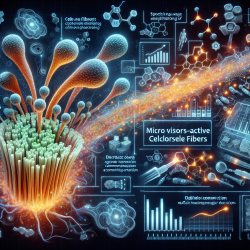Attention-Deficit/Hyperactivity Disorder (ADHD) is a complex neurodevelopmental disorder affecting approximately 5% of children worldwide. Recent research by Baboli et al. has shed light on the neuroanatomical differences between children with familial ADHD (ADHD-F) and non-familial ADHD (ADHD-NF). Understanding these differences is crucial for practitioners aiming to enhance their diagnostic and therapeutic approaches.
The Study Overview
The study investigated the influence of familial risk factors on the neuroanatomy of children with ADHD. The researchers compared cortical thickness, surface area, and volume-based measures among 606 participants divided into three groups: familial ADHD (ADHD-F), non-familial ADHD (ADHD-NF), and typically developed children.
Key Findings
- Cuneus Surface Area: Children with ADHD showed a significantly reduced gray matter surface area in the left cuneus compared to typically developed controls.
- Thalamus Volume: Among the ADHD subgroups, children with familial ADHD exhibited increased gray matter volume in the right thalamus. This increase was correlated with a reduction in DSM-oriented t-scores for ADHD problems.
- Cortical Thickness: The study found significantly thinner cortical thickness in the right pars orbitalis among children with familial ADHD.
Implications for Practitioners
The findings suggest that a positive family history of ADHD is associated with specific structural abnormalities in the brain. These abnormalities may contribute significantly to the emergence of ADHD symptoms. For practitioners, this information can guide more personalized approaches to treatment and intervention.
- Differential Diagnosis: Recognizing neuroanatomical differences can help differentiate between familial and non-familial cases of ADHD, leading to more tailored treatment plans.
- Treatment Strategies: Understanding these structural differences may aid in developing targeted interventions that address specific brain regions affected by familial risk factors.
- Further Research: Encouraging further research into these neuroanatomical substrates could lead to novel biomarkers for early prevention and individualized intervention strategies.
The Path Forward
This study highlights the importance of considering familial risk factors when diagnosing and treating ADHD. It opens avenues for future research into how these neuroanatomical differences evolve over time and their impact on clinical outcomes. Practitioners are encouraged to stay informed about ongoing research to continually refine their approaches to managing ADHD.










